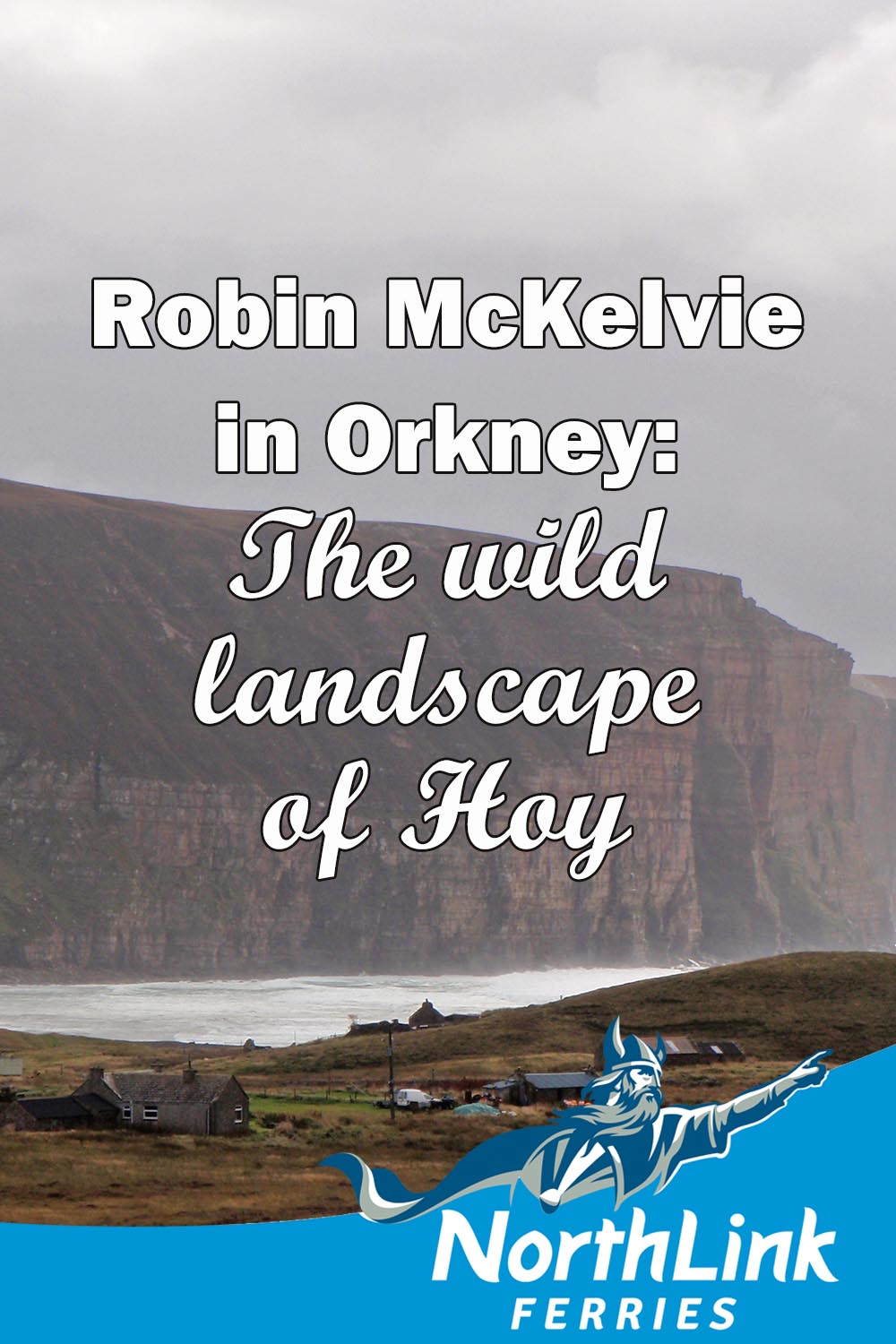Robin McKelvie in Orkney: The wild landscape of Hoy
You just don’t forget your first sightings of Hoy and the famous Old Man of Hoy. Mine came aboard a NorthLink Ferry, as I left mainland Scotland and sailed across the Pentland Firth bound for Stromness. En route I came across another world altogether. The hulking island of Hoy rose like a great leviathan from the depths, all gnarly hills and sheer cliffs: a wild, ragingly beautiful real life Jurassic Park that I just had to visit.
The Hoy RSPB reserve offers 10,000 acres of moorland and coastal cliffs, with everything from cute wee puffins, right through to majestic sea eagles, and on to fulmars, gannets and great skuas.
Think Orkney and many people conjure up images of trim well-tended farmers’ fields, lowland moors alive with Neolithic sites and low rolling hills. This is not Hoy. Orkney’s second largest island is easily its most dramatic. The Viking sailors knew Hoy fittingly as the ‘High Island’ and the name has stuck from the Old Norse ‘Haey’. This is Orkney writ large, a wildscape forged by wild glacial forces.
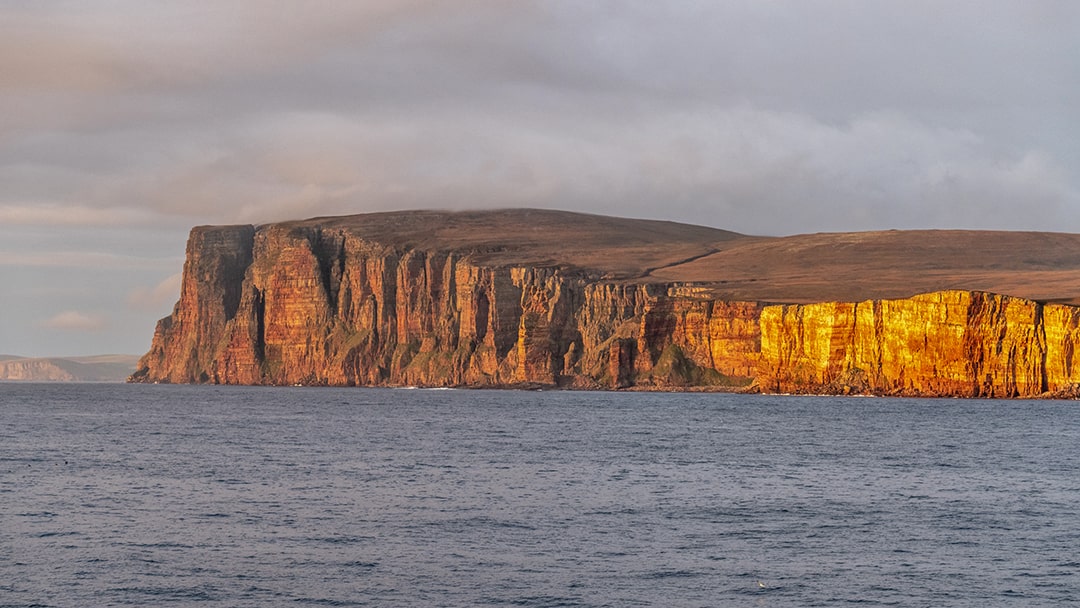
You can see Hoy miles before you get there and also dominating the landscape from a swathe of other Orcadian islands. Other isles steal Hoy’s brooding hills as a backdrop to make themselves look even prettier. The numbers don’t lie either. Ward Hill is Orkney’s highest at more than 1,500 feet. Then there is St John’s Head, which at 1,136 feet is the UK’s highest vertical cliff face.
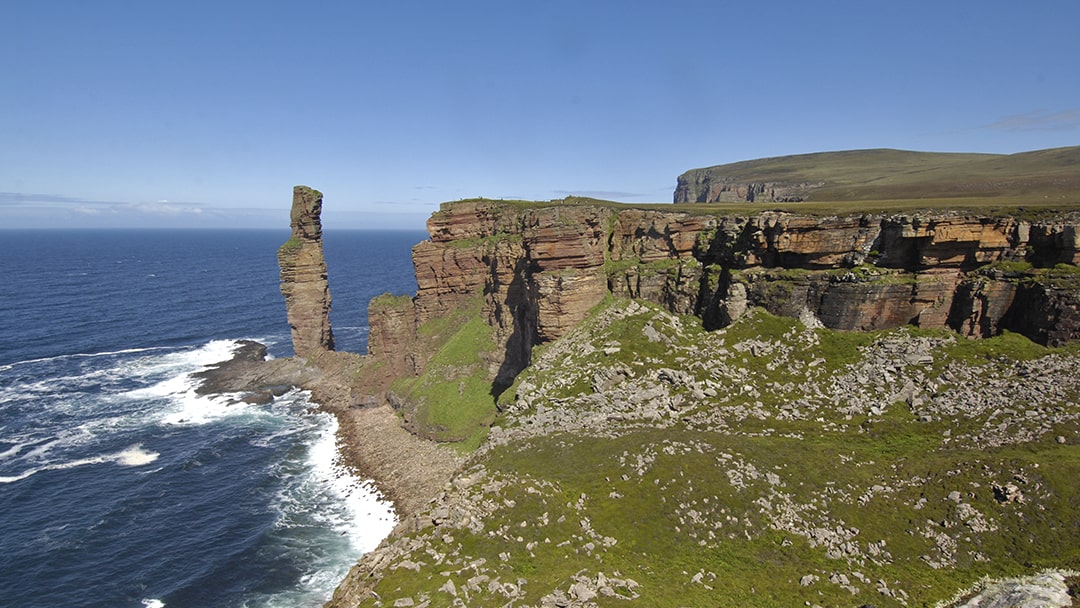
My favourite natural feature on Hoy – and famous well beyond Orkney – is the Old Man of Hoy. This 137m-high sandstone rock stack is such a tough climb that it was not conquered until 1966 by Chris Bonington (who my sailor dad once sailed with to Norway), Rusty Baillie and Tom Patey. Before that many climbers considered this striking stack, surrounded by the pummelling Atlantic, impenetrable.
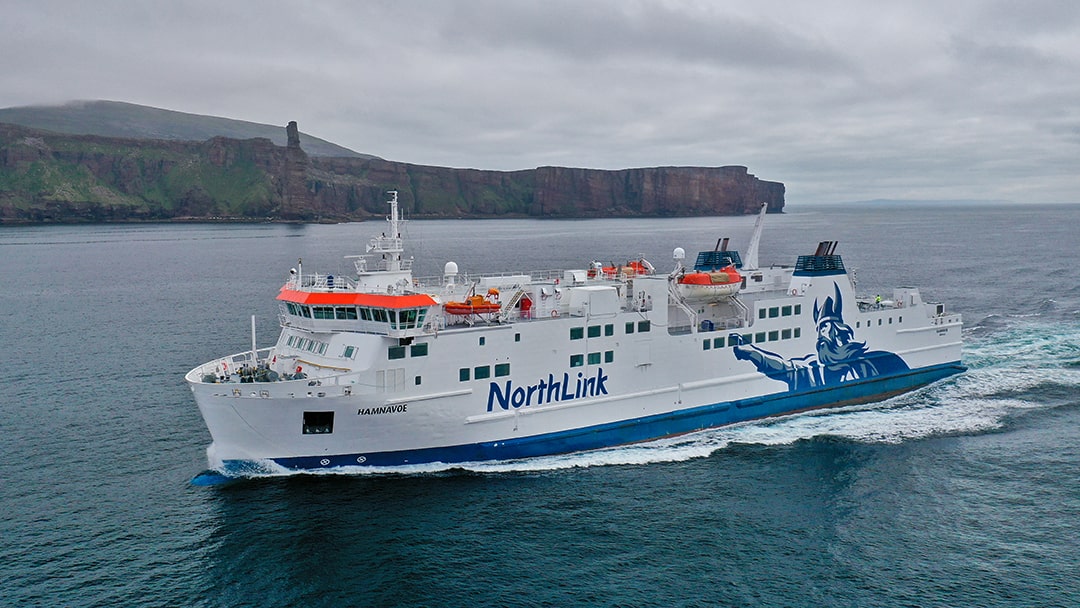
The Old Man of Hoy surges out of the Atlantic just south of St John’s Head. I hiked out here from lovely Rackwick, whose beach is worth visiting in its own right. This being Hoy, the silver sands are shrouded by hulking cliffs in a spot that rivals anything in the archipelago for its beauty.
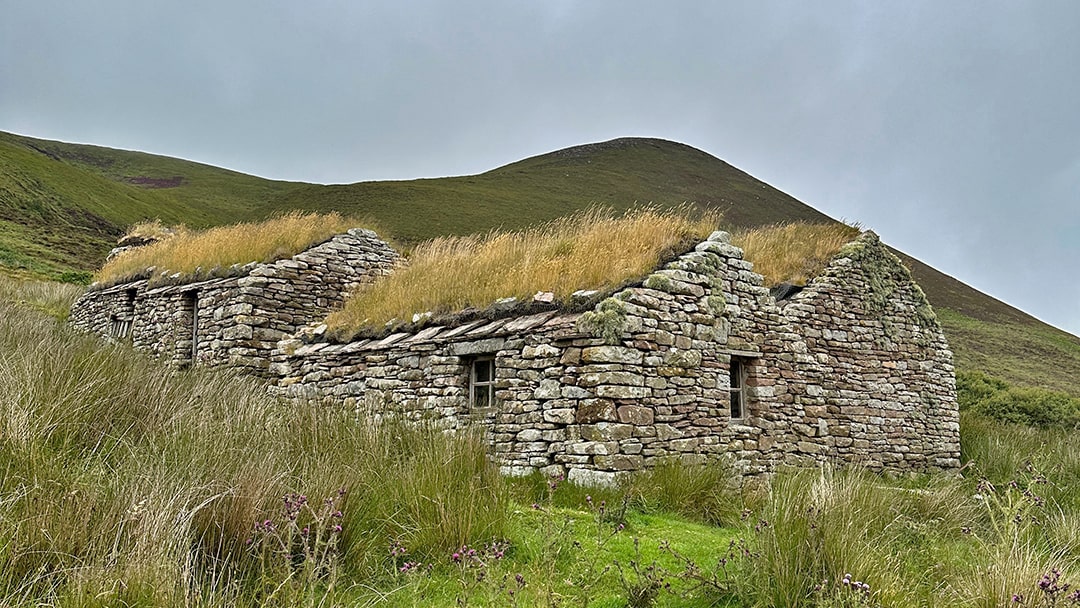
If you want to learn more about this part of the world, check out the Craa’s Nest Museum, near the Rackwick Hostel, which is by the walking route to the Old Man of Hoy. The old 18th century croft buildings here have been lovingly restored. View the beds, byre and the barn with a kiln for drying oats to peer deep into a way of life long lost to the isles.
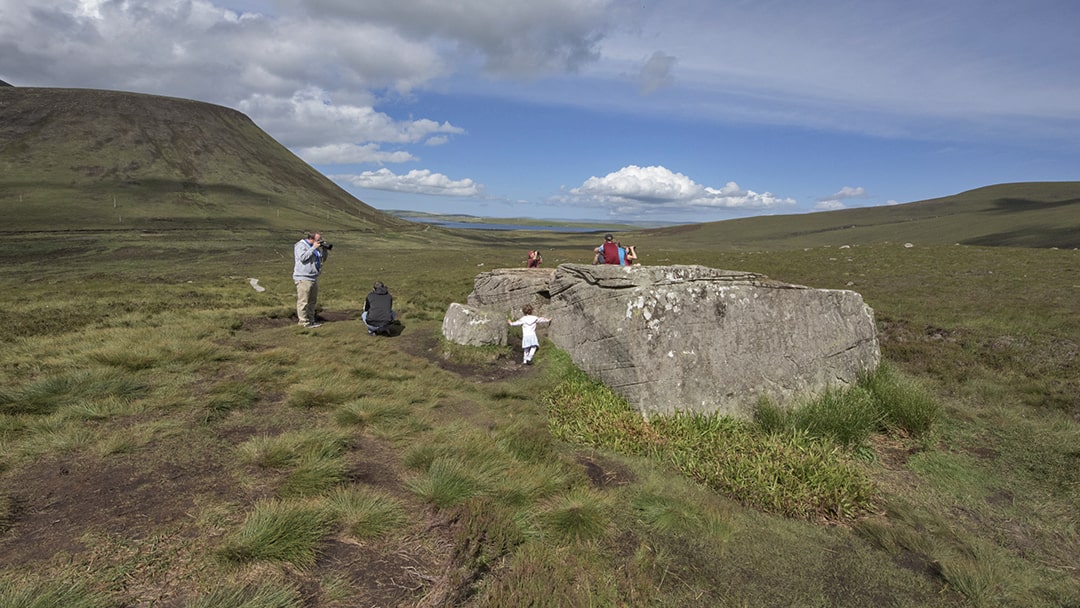
There are plenty of other diversions on the way out to the Old Man of Hoy. Most striking is the Dwarfie Stane, a megalithic chambered tomb crafted from Devonian Old Red Sandstone. Time is fluid on Hoy and here you are transported back 5,000 years deep into our prehistory. This is a land of myth and legend too, with the stone said once have been home to a dwarf named Trollid.
Pushing on the Old Man of Hoy the landscape gets wilder still, rugged moor, brooding hill and soaring cliff. If the wind is up some of the local waterfalls turn tail and send spray high up towards the trail. On days like these the local seabirds have a ball, flinging themselves around in the wind.
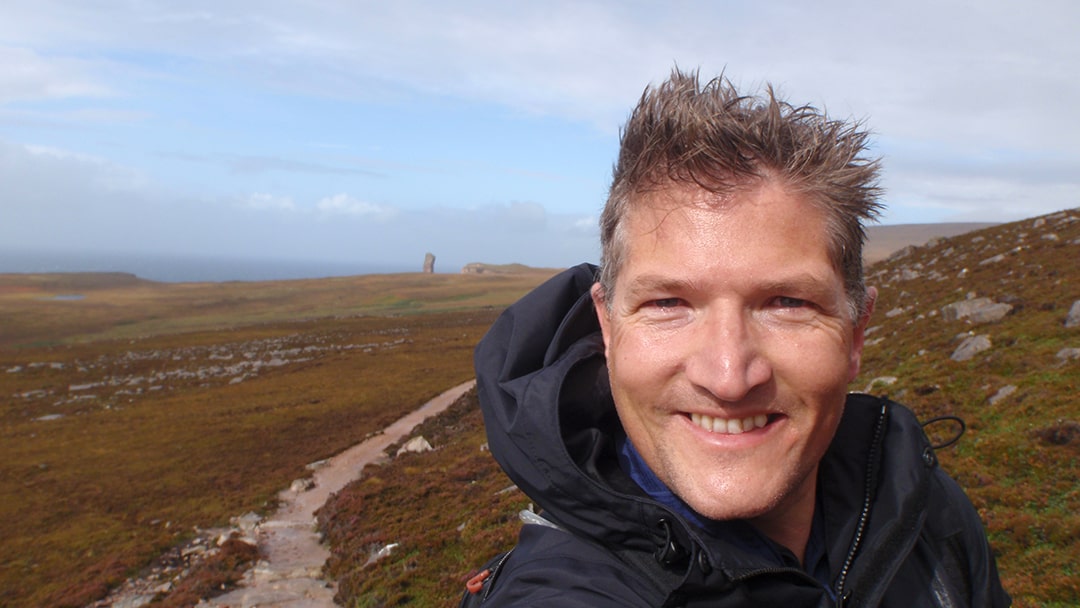
The effort is worth it when you finally make it out to the Old Man of Hoy. It stands sentinel on the approaches to Scapa Flow, a rock guard that has seen everything from Viking longships, through to Royal Navy destroyers and the surrendering German High Seas Fleet at the end of World War One. You’ll want to linger here admiring its grandeur and timelessness. If you’re lucky you may see even more than the dolphins I spotted, as whales patrol these waters too.
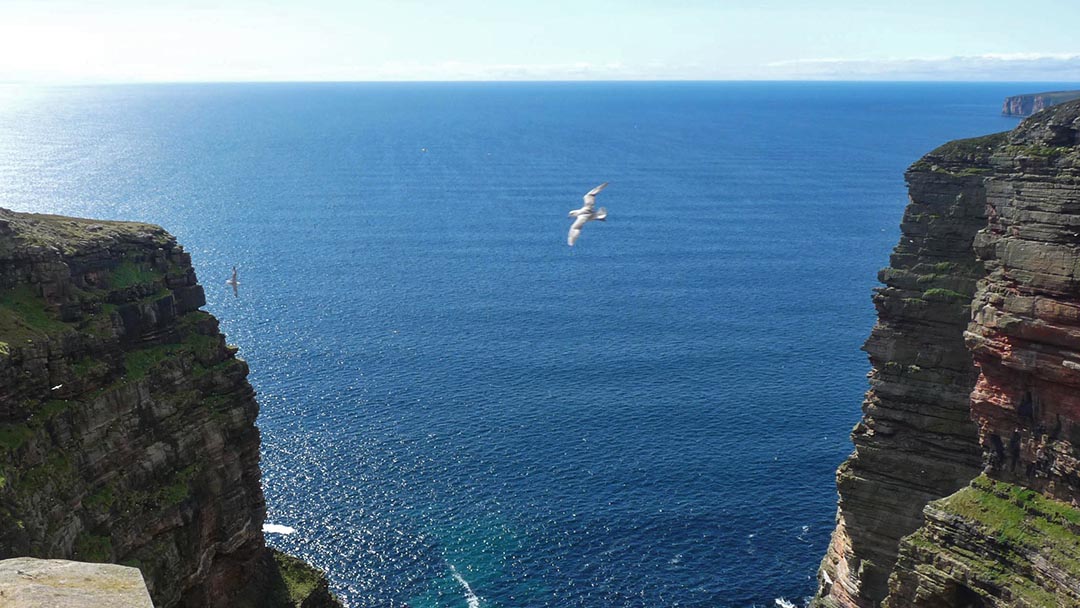
The wildlife is indeed a key draw on Hoy. The Hoy RSPB reserve offers 10,000 acres of moorland and coastal cliffs, with everything from cute wee puffins, right through to majestic sea eagles, and on to fulmars, gannets and great skuas. The moorlands are also a refuge for the elusive hen harrier, one of Britain’s rarest birds of prey.
The natural wonders don’t stop there. Berriedale is the UK’s most northerly native woodland, a riposte to people who don’t believe the Northern Isles have trees. Indeed the reserve shows how Orkney would have looked in the days when most of the archipelago was covered in trees. Look out for aspen, downy birch, rowan and willow.
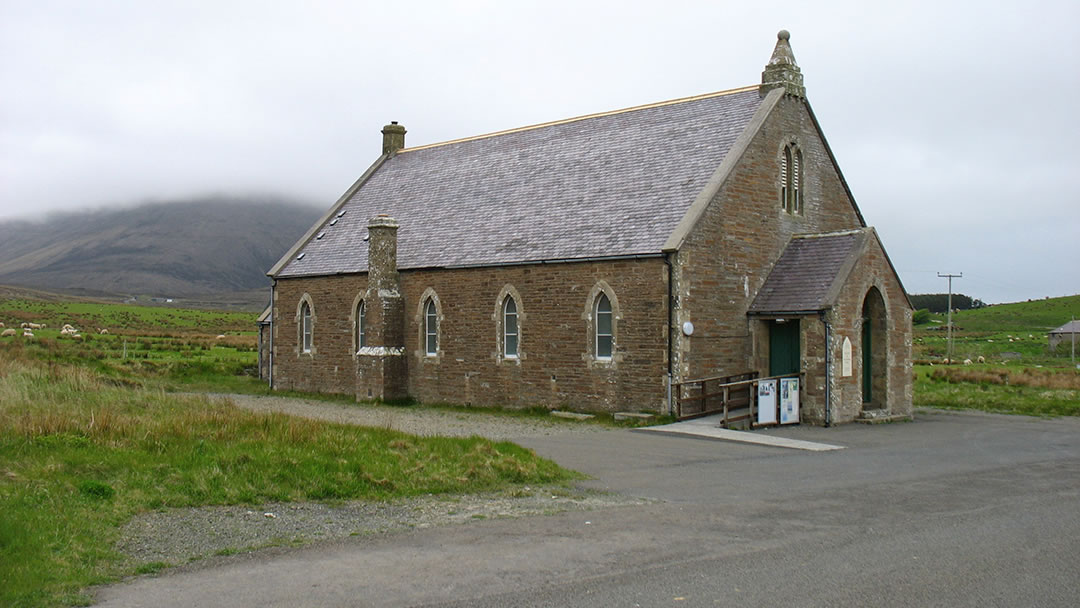
The imprint of man runs deep on Orkney too. The community-run Hoy Heritage Centre is a joy in itself, a 19th century kirk whose pulpit is reputed to have wooden panels from a waylaid Spanish Armada ship. Its exhibits and exhibitions open up the isle’s story – natural, cultural, archaeological and social. I appreciated the information on the Old Man of Hoy and the Hoy poetry. Scholars lose themselves in a natural history library that brings together over 100 books on Hoy’s flora and fauna.
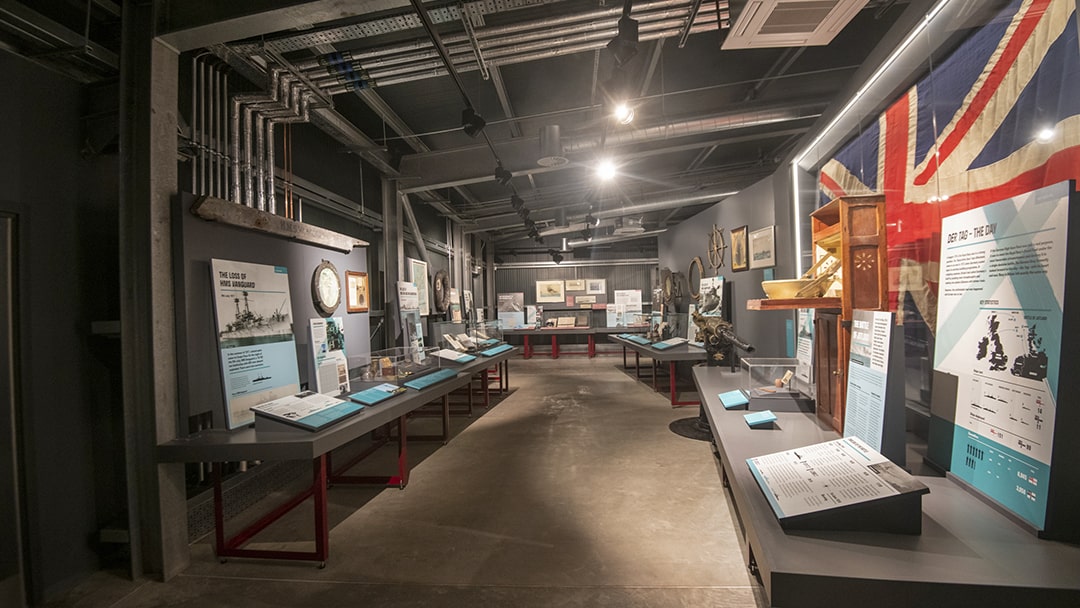
Hoy was in the limelight during both World Wars. As the UK’s finest natural harbour, Scapa Flow was a key naval base in both wars. A visible legacy is the gun battery at Scad Head. The Scapa Flow Museum too is remarkable – I won’t go into it in detail here as I’m writing a future blog on it. Safe to say it’s a must.
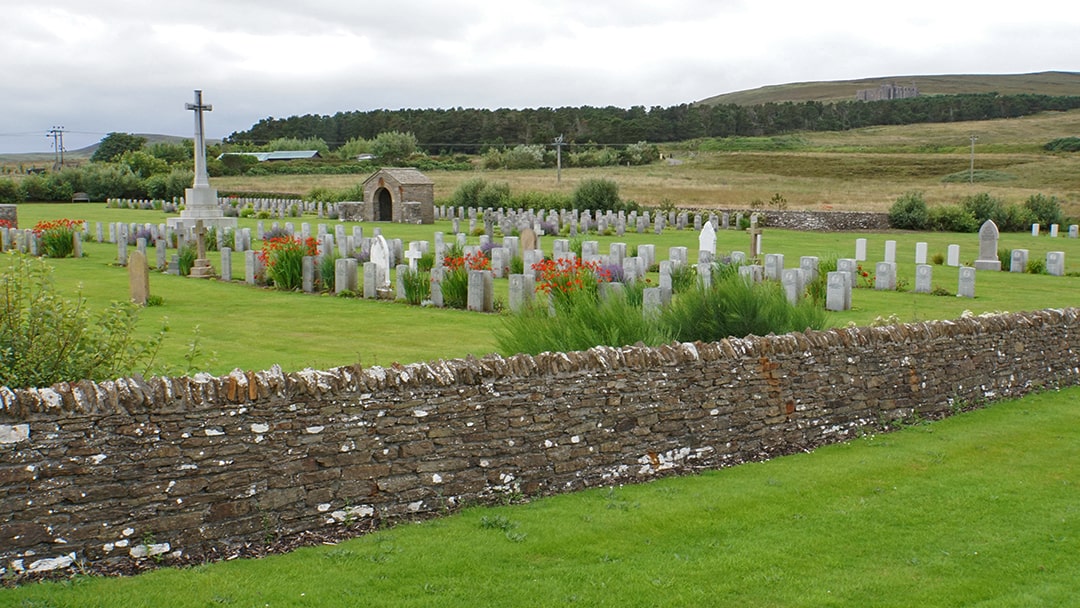
After you visit also head to the Lyness Naval Cemetery. The sheer scale of one of the largest Commonwealth War Graves Commission sites is poignant in itself, as it’s the final resting place for more than 600 men. The graves include souls lost around Orkney aboard the HMS Hampshire, HMS Vanguard, HMS Narborough and HMS Opal in local waters during World War One. There are also men lost from the torpedoed Royal Oak in World War Two; German Navy sailors and German airmen too.
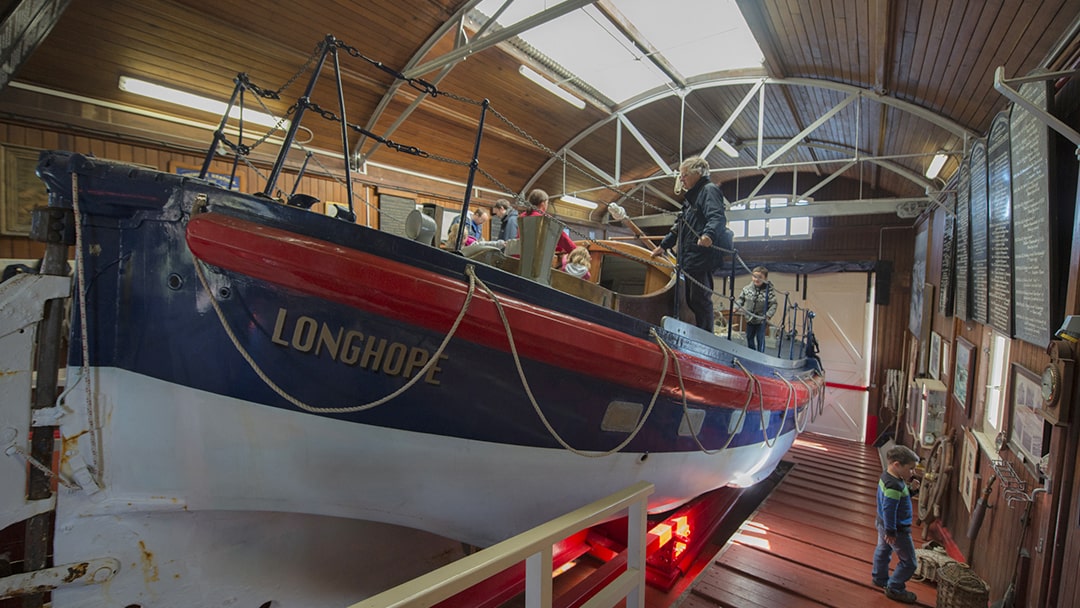
The gentler southern end of Hoy is often comparatively neglected, despite being home to most of the population. South Walls is an isle connected to Hoy by a causeway. Longhope, Hoy’s largest village, has a tragic past. Eight local men lost their lives in the 1969 the Longhope Lifeboat Disaster. Learn more about that day and the present work of the local RNLI at the Longhope Lifeboat Museum. The highlight is an original 45ft lifeboat from the 1930s.
Thinking back to my first sighting of Hoy from the NorthLink Ferry I can still recall the sense of excitement and wonder. I retain that when I return today. Hoy is a deeply special island whose wild landscapes captivate and draw you in to hiking adventures, but it’s also an isle where the imprint of man, an often tragic imprint, is felt heart-tuggingly strongly too.
 By Robin McKelvie
By Robin McKelvieRobin McKelvie is an award-winning travel writer and broadcaster who has been published in over 200 magazines and newspapers worldwide.
Pin it!